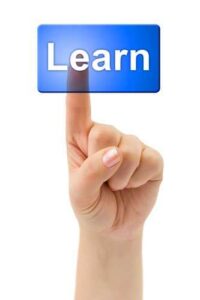Anatomy and Physiology Practice Questions
- Posted by Brian Stocker MA
- Date January 11, 2012
- Comments 3 comments

Physiology and Anatomy questions are on the following tests:
Practice Questions
1. An example of human homeostasis is _______________.
a. Metabolism
b. Adrenalin
c. Hormones
d. Fluid Balance
2. Human homeostasis is the ability of the body to regulate its _______________ in response to fluctuations in the environment outside the body.
a. Inner environment
b. Outer environment
c. Temperature
d. Metabolism
3. The amount of energy / calories that your body requires to maintain itself is known as _______________.
a. Temperature
b. Fluid balance
c. Botulism
d. Metabolism
4. An example of a person whose metabolism has lowered is _______________.
a. A woman who is in her teens and quite athletic
b. A man who is past 30 and whose body is losing muscle.
c. A man who is past 30 and works out daily.
d. A man who is past 30 and eats a low-fat diet.
5. An example of something that increases a person’s metabolism is _______________.
a. Aerobic exercise
b. Mental exercise
c. Eating a fatty diet
d. Reading
Answer Key
1. D
The human body manages a multitude of highly complex interactions to maintain balance within a normal range. The kidneys are responsible for regulating blood water levels, re-absorption of substances into the blood, maintenance of salt and ion levels in the blood, regulation of blood pH, and excretion of urea and other wastes.[i]
2. A
3. D
4. B
Exercise and low fat diets will increase metabolism. Choice B, a man who is past 30 and whose body is losing muscle is the only choice.
5. A
Exercise will increase metabolism, so A. aerobic exercise.
Anatomy and Physiology Tutorials (PDF)
Anatomy and Physiology Tutorials (PDF)

Most Common Anatomy and Physiology Questions on a Test
- Identifying functions and systems in the body (e.g. endocrine, circulatory, and skeletal systems)
- Identifying organs and locations (such as the kidneys, heart, and brain)
- Basic cell structure and function
- Basic body processes (such as circulation, digestion, and gas exchange)
- Common pathological conditions and causes (such as diabetes, heart disease, and cancer)
- Common medical treatments (such as day surgery, medication, and physical therapy)
- Medical terminology and anatomy.
Date Published: Wednesday, January 11th, 2012
Date Modified: Wednesday, April 19th, 2023
You may also like
CELPIP Writing Prompts
The CELPIP writing evaluates your ability to communicate effectively in written English different tasks. Here are some sample CELPIP Writing prompts for writing an exmail. You are given a prompt and a scenario. Your email may be formal or informal, …
CCAT Vocabulary Practice – Grades 4 – 5
1. What is the definition of the word ‘polygon’? a. A curved line b. A straight line c. A closed plane figure with straight sides d. A round shape 2. Which term means to ‘depict or show something’? a. Represent …
Vocabulary Practice for Grades 4 & 5
1. What is a “polygon”? A) A three-dimensional shape B) A figure with multiple angles and sides C) A type of line segment D) A type of angle 2. What does the word “represent” mean? A) To take away something …

3 Comments
also make sure to think that they will be asking for the most appropriate choice, even if they all make sense
very helpful thanks!
More practice???